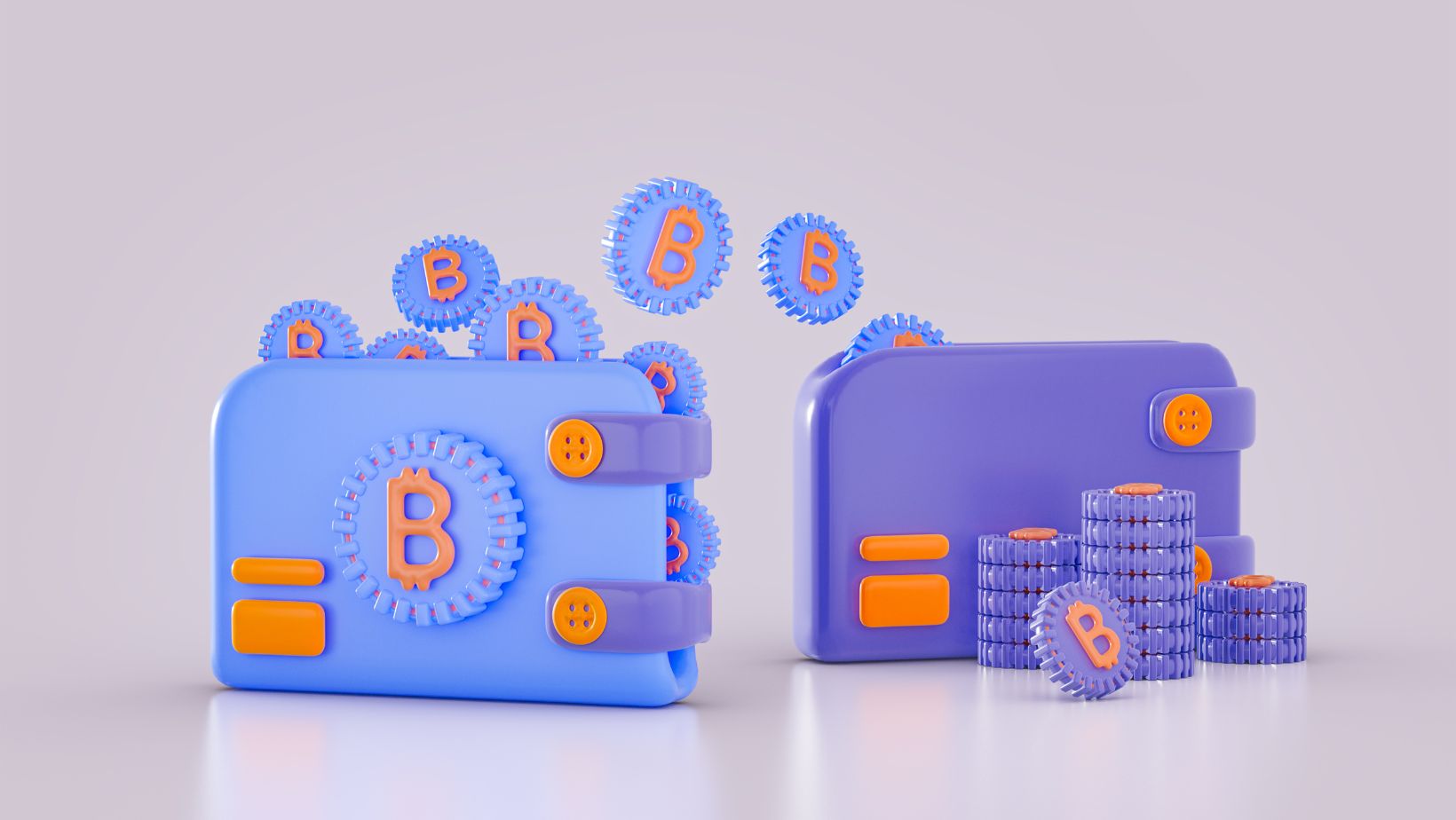
The Global Cryptocurrency Payment Apps market is expected to reach $2.108 million by 2030. It has grown 290% since 2022 due to increasing adoption of cryptocurrencies, better security in crypto apps and cost effective payment solutions they offer. Many companies are investing in digital crypto projects seeing the future of cryptocurrencies.
In this article we will take you through the basics of building a crypto wallet app for your business. You will learn about the different types of crypto wallet apps, their features and a step by step process to build a scalable and functional crypto app.
What is a Crypto Wallet App
A cryptocurrency wallet app is software that manages, stores, and transfers crypto assets. Unlike traditional digital wallets, these apps don’t store the actual coins but hold the keys to these coins, which are stored on public blockchain networks. Essentially, crypto wallet apps act as intermediaries, where users can store their public and private keys and monitor their cryptocurrency balance in one place.
When stablecoins, NFTs, or other cryptocurrencies are sent to the wallet, the ownership is assigned to the wallet’s address. The cryptographic keys are used to verify user addresses and perform transactions, so security is a big deal in crypto wallet development.
Building a custom crypto wallet app ensures the security of digital currencies, gives you more control over cryptocurrencies, and provides a smooth user experience. Every reliable crypto wallet development company use proper project planning.
Types of Crypto Wallets
The functionality and technology required to build a crypto wallet app depend on the type of wallet you choose. The first step to understand how to build a crypto wallet is to identify which type suits your project requirements and needs:
Cold Wallets (Hardware Wallets)
Cold wallets are physical devices that store cryptocurrency offline. They provide an extra layer of security by keeping private keys completely offline and away from the internet, making them highly resistant to online hacks.
Hybrid Wallets
Hybrid wallets combine features of both cold and hot wallets. They store most of the funds offline (like cold wallets) for security and smaller amounts online (like hot wallets) for easy access and transactions.
Hot Wallets
Hot wallets are software based wallets connected to the internet. They offer easy access to cryptocurrencies and are ideal for active trading and transactions. But they are less secure than cold wallets as they are always connected to the internet.
Choosing the right wallet type is just one part of building a secure cryptocurrency wallet app. Identifying the features and technology your app will require helps you to build a cost effective and competitive crypto payment solution. Let’s see the most important features that can boost your cryptocurrency platform.
Features of Crypto Wallet Apps
Planning your app’s functionality is important as it will shape your future crypto wallet. It will also help you to understand the use cases and identify the advantages of your app over existing market apps. Here are the basic features of crypto apps:
Support for Multiple Cryptocurrencies
Multi-currency apps have an edge over single currency apps like Bitcoin or Ethereum wallets.
Having multiple currencies can greatly increase the usability of your digital wallet app and make it more versatile and functional. Multi-currency wallets also allow asset holders to diversify their portfolio which is beneficial for both businesses and customers.
Payment Gateways
Integrating payment gateways allows users to make payments directly from their crypto wallets using external payment processors. This feature makes transactions easy without compromising security.
User Authentication
User authentication is required to allow access to the wallet only to authorized users. This feature is mandatory for various compliance standards like AML and KYC. Secure user authentication can be done through login credentials, biometric authentication, or multi-factor authentication (MFA) to prevent unauthorized access to crypto wallets.
Auto Logout
Auto logout provides an extra layer of security to ensure that only authorized users can access the digital wallet app. Once the session is ended the system will auto logout and confirm the in-app processes and crypto manipulations are safe.
Secure Blockchain-Based Transactions
When building a crypto app, the security of on-chain transactions and other operations is paramount. Transaction security measures include encrypting sensitive data, verifying user accounts and signatures, and integrating blockchain security protocols.
Address Management
Efficient address management feature allows users to track and identify wallet addresses. Developers should make sure the system provides a clean design and user friendly experience for managing crypto addresses.
Paper Wallet Integration
Importing paper wallets allows users to transfer funds between a physical paper wallet and the digital crypto wallet app. This should be handled with care as it involves sensitive user information and financial data.
QR Code Scanning
QR code scanning makes sending and receiving cryptocurrencies easy. Users can scan QR codes to input wallet addresses, make transactions, or log in to their crypto wallets from any mobile or desktop device.
Building a Cryptocurrency Wallet App: 8 Steps
To build a crypto wallet follow these basic steps and best practices based on industry experience:
Blockchain and Cryptocurrency Basics
Stay updated with the latest trends and technology updates in the blockchain and crypto space. Understanding blockchain architecture, consensus mechanisms and cryptocurrency features will help you to boost your project’s performance and competitiveness.
Open-Source Cryptocurrency Libraries
Use well maintained open-source cryptocurrency libraries like BitcoinJ for Bitcoin or Web3.js for Ethereum. These libraries will simplify your development workflow and ensure security.
APIs for Seamless Integration
Use APIs provided by blockchain networks for reliable integration. These APIs provide a standardized way to interact with the blockchain, making the integration process smoother and faster.
Cloud for Scalability
Cloud platforms like AWS, Google Cloud, and Azure can be used to build scalable crypto web apps. Cloud solutions allow businesses to allocate compute resources efficiently so the app performs well during peak usage.
Choose the Right Tech Stack
Choose a tech stack that fits your project’s needs and business goals. Use JavaScript for web-based wallets or Java/Kotlin for mobile apps.
Select the right databases, frameworks, and libraries to make it smooth and fast.
Security Measures
Implement industry-standard security practices like data encryption, secure key management, and secure coding practices. This will make your product more resilient to hacking attacks and other threats and get more visibility to a larger audience.
Competitor Analysis
Do market research to understand the strengths and weaknesses of existing crypto wallets. Identify areas where your product can be differentiated with unique features or improvements. Use the research to make data-driven decisions and build a robust digital wallet.
Launch and Refine
After the app is launched, listen to user feedback and adjust the functionality to meet the client’s needs. Continuous refinement and updates based on user input and industry trends will ensure long-term success.
Crypto Wallet Development Challenges
Rostyslav Bortman, Head of Blockchain at IdeaSoft says that the main challenge in crypto wallet development is private key management on the device. Developers need to analyze the hardware architecture and technical specs to ensure private key storage is secure.
Other important ones are:
Blockchain Development Team
Hiring the right specialists for your project needs and business goals is crucial. Check the developers experience and discuss your expectations to ensure smooth collaboration.
Scalability
As the user base and transaction volume grows, scaling your project will optimize for more traffic. Think about the future development and growth strategy of your digital crypto wallet to make it successful.
UI/UX Design
In Web 3.0 development an outstanding user experience and smooth functionality is a competitive advantage. An expert UI/UX team can create a user friendly interface to engage users with wallet services.
Wrapping Up
Building a crypto wallet is all about planning, choosing the right features and overcoming the challenges. By understanding the types of crypto wallets, implementing the must haves and following a strategic development process you can build a secure and fast crypto wallet app. Continuous refinement and staying up to date with industry trends will ensure long term success.









